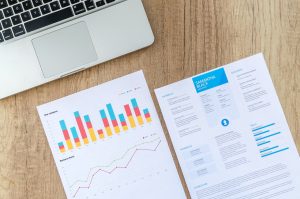
Roofers construct, install, maintain, and repair roofs using a range of tools, equipment, and techniques. In this post, we go through what to put in a roofer resume, how to create one, and example to help you get started. We also provide advice for writing a roofing resume.
Making a CV that highlights your abilities and qualities will help you land a job as a roofer by catching the attention of hiring managers.
How to write a CV for a roofer
To write your resume for roofing, adhere to following steps:
1. Examine the job description
Take a look at the job description. This will help you decide whether your experience is relevant to the role and confirm that you are still interested in applying. Make sure to list any abilities, responsibilities, or credentials that correspond to your experience. As you compose your CV, make a note of these to add.
2. Choose a resume format.
Select a resume format that enables you to write a clear, easy-to-read document for hiring managers. Resume templates are available online or through various sorts of applications. Information can be formatted using templates in a number of different ways, such as by grouping information into different columns or by putting all of your information in a single list. Look through the templates and choose the one that most closely reflects your preferences.
3. Beginning with your name
Put your name at the top of the document before you start writing your roofing resume. Your first and last names should be written in a font size larger than the rest of your resume. To make your name stand out from the rest of your resume and generate contrast, think about using formatting tools or capital letters.
4. Include your contact details
In a smaller yet readable font, add your contact details next to your name. Include at least your phone number and email address. It’s not typically necessary to give your address or details about your professional networking website.
5. Create an expert summary.

A professional summary might be appropriate to put at the top of your resume. A professional summary, also known as a resume summary, is a succinct statement that you can place at the top of your resume to showcase your best skills and accomplishments. Utilize the summary to set yourself apart from the competition. Write a brief response that briefly discusses your work history, and think about including specifics from the job description that showcase your skills.
Include a bulleted list of your duties and accomplishments from your role under each job heading. Find ways to include the knowledge or experience that is required in the job description. It’s crucial to use the right verb tense while describing your employment history. For instance, use present tense verbs to discuss duties at your current employment, but past tense verbs to discuss duties at former positions.
6. Describe your educational background.
Include details about the institutions you attended, working backwards from your highest level and most recently completed program. One Greeley roofer mentioned that a high school graduation or GED is typically required for jobs as a roofer, however experience from a trade school may also be advantageous. At a minimum, include the institutions’ names, your graduation month and year, and their locations. Indicate the degree or certificate you received if you attended college or a trade school.
7. Include licenses
To include your pertinent licenses, you might want to add a section. This may set you apart from other applicants and lend credence to your suitability for the job. Include the company from which you obtained your license and the date of your license’s acquisition.
8. Your set of abilities
Make a section on your resume where you may mention all of your pertinent abilities. Your list should include a mix of technical, soft, and hard talents. You should also think about using adjectives to describe your level of expertise in each area. Reread the job description to determine the abilities needed for the position, and be sure to include any of them that you possess on your resume.
9. Proofread
It’s crucial that you review your work once you’ve finished composing your resume. Verify that you employed consistent formatting across the entire resume by proofreading it for typos and grammatical errors. Think about reading your resume aloud to make sure the content is clear, and consider having a friend or family member to check your work for mistakes. Any errors you discover during this procedure should be fixed.








